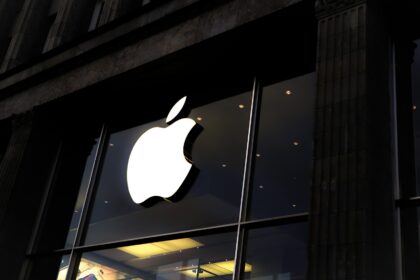Meta is launching its controversial “pay or consent” model in the UK, giving Facebook and Instagram users a choice between paying monthly fees for ad-free experiences or accepting personalized advertising. The move comes after months of negotiations with UK regulators and marks a significant expansion of Meta’s subscription strategy beyond the European Union.
What exactly is this new model?
Starting in the coming weeks, UK users over 18 will receive notifications offering them a clear choice. They can either continue using Facebook and Instagram for free with personalized ads or pay a monthly subscription to remove ads entirely.
The pricing structure is straightforward but varies by platform. Web users will pay £2.99 per month (about $4), while those using iOS and Android apps face higher costs at £3.99 monthly (roughly $5.33). Meta attributes this mobile premium to “the fees that Apple and Google charge” through their app stores.
The subscription operates on an all-or-nothing basis. If you subscribe, the ad-free experience applies to all Facebook and Instagram accounts linked to your Meta Account Center. Each additional account adds £2 monthly on web or £3 on mobile platforms.
How UK pricing compares to EU rates
UK users are getting a significantly better deal than their European counterparts. Current EU subscription prices start at €5.99 monthly on web and €7.99 on mobile – that’s roughly £5 and £6.70 respectively.
The EU pricing wasn’t always this “reasonable.” When Meta first launched the service in late 2023, European users faced steep charges of €9.99 monthly on web and €12.99 on mobile (about £8.40 and £10.90). Only after intense regulatory pressure did Meta slash these prices by 40% in November 2024.
Meta has positioned the UK pricing as “one of the cheapest across our peers,” clearly learning from the EU backlash over high subscription costs.
What happens if you choose not to pay?
Users who opt for the free experience will continue seeing personalized ads based on their data. They’ll retain access to existing privacy tools including Ad Preferences and Activity Information controls, but their personal information will still be used for ad targeting.
Unlike EU users, UK customers won’t have a “less personalized ads” option. European regulators forced Meta to add this third choice, allowing users to see ads that use less personal data without paying subscription fees. UK users face a simpler binary decision: pay or accept full personalization.
Regulatory background and legal precedent
This launch follows a landmark legal settlement that could reshape how tech giants handle user data. In March 2025, Meta agreed to stop targeting UK human rights campaigner Tanya O’Carroll with personalized ads after she filed a lawsuit claiming the company violated UK data protection laws.
O’Carroll argued that Meta’s targeted advertising constitutes “direct marketing” under UK GDPR, giving users an absolute right to object. The Information Commissioner’s Office (ICO) backed her position, stating that “online targeted advertising should be considered as direct marketing.”
The settlement avoided a High Court trial but established important precedent. Meta agreed to stop processing O’Carroll’s data for advertising purposes, though the company maintains it “fundamentally disagreed” with her claims.
ICO welcomes the change
The UK’s data protection authority has given its blessing to Meta’s new approach. An ICO spokesperson said the subscription model moves Meta away from “targeting users with ads as part of the standard terms and conditions” – a practice the regulator deemed non-compliant with UK law.
The ICO noted that Meta significantly lowered its initial pricing during discussions with regulators. This resulted in UK users paying “close to half that of EU users” – a major victory for British consumers.
“People must be given meaningful transparency and choice about how their information is used,” the ICO stated, while acknowledging that online platforms need to operate commercially.
Why such different treatment from EU regulations?
Meta has been highly critical of European regulatory “overreach” while praising the UK’s “constructive approach.” The company faces much stricter requirements in the EU under both GDPR and the Digital Markets Act.
European regulators didn’t just demand lower prices – they also insisted on the third “less personalized ads” option, essentially forcing Meta to offer a middle ground between paid and fully-tracked experiences. UK regulators appear more willing to accept the binary choice model.
Meta emphasized that the UK’s “pro-growth and pro-innovation” regulatory environment allows for simpler implementation compared to the complex EU requirements.
Financial impact on Meta’s business model
Advertising accounts for approximately 98% of Meta’s $134.9 billion annual revenue, making this transition particularly significant for the company’s business model. The challenge lies in balancing regulatory compliance with advertising income that funds free services.
Meta generated about $34 billion from advertising revenue in 2024, with the vast majority coming from personalized ads. The subscription model represents a fundamental shift toward direct user payments rather than advertiser-funded services.
Industry analysts suggest that even small subscription uptake could impact Meta’s advertising effectiveness by reducing the pool of data available for targeting remaining free users.
Global expansion of “pay or consent” models
Meta’s UK launch reflects a broader industry trend toward subscription-based privacy options. Several major platforms now offer paid ad-free experiences, including YouTube Premium, LinkedIn Premium, and various news publishers.
The model has proven controversial among privacy advocates who argue it creates a “pay to privacy” system where only affluent users can afford data protection. Open Rights Group criticized Meta’s approach, stating it “penalizes people who want to exercise their data protection rights.”
However, supporters argue the model provides genuine user choice while maintaining free access for those willing to share data.
Technical implementation details
When users subscribe, their personal data will not be used for advertising purposes, but their accounts will remain personalized in other ways. This means features like content recommendations and friend suggestions will continue functioning normally.
The subscription covers both Facebook and Instagram simultaneously – users cannot purchase ad-free access for just one platform. This bundling approach maximizes subscription value while simplifying Meta’s technical implementation.
Existing subscribers in other regions report that the ad-free experience is genuinely comprehensive, with no promotional content appearing in feeds, stories, or other platform areas.
What this means for UK users
The launch gives UK users unprecedented control over their social media advertising experience. For heavy platform users, £2.99 monthly represents significant value compared to the constant interruption of personalized ads.
However, the pricing could add up for households with multiple users or those managing business accounts. A family of four with standard personal accounts would pay nearly £12 monthly on web or £16 on mobile platforms.
The timing couldn’t be more relevant as privacy concerns continue growing among UK consumers. Recent surveys suggest only 13% of Facebook users are comfortable sharing data for relevant ads, indicating strong potential demand for ad-free options.
Looking ahead
Meta expects to begin rolling out notifications to UK users “in the coming weeks”, with the subscription option becoming widely available before the end of 2025. The company emphasizes that initial notifications will be dismissible, giving users time to consider their options.
Industry observers are watching closely to see whether UK uptake differs from EU adoption rates. Early European data suggests modest but growing subscription numbers, particularly among privacy-conscious younger demographics.
The success of Meta’s UK implementation could influence other tech giants considering similar models, potentially reshaping the entire social media landscape around user choice rather than advertising-only revenue streams.
























